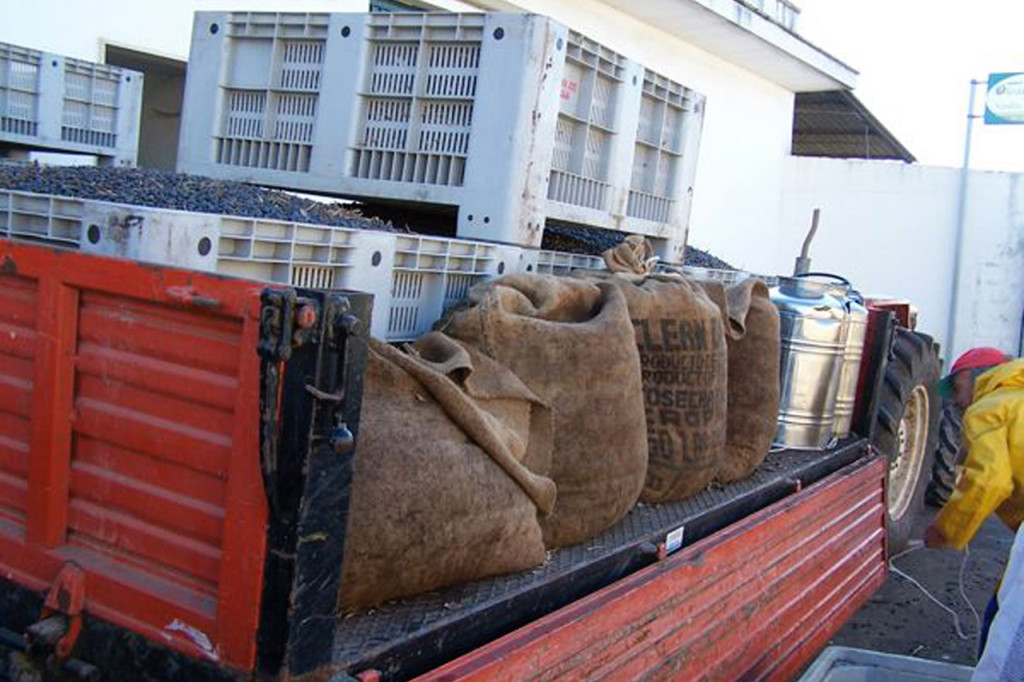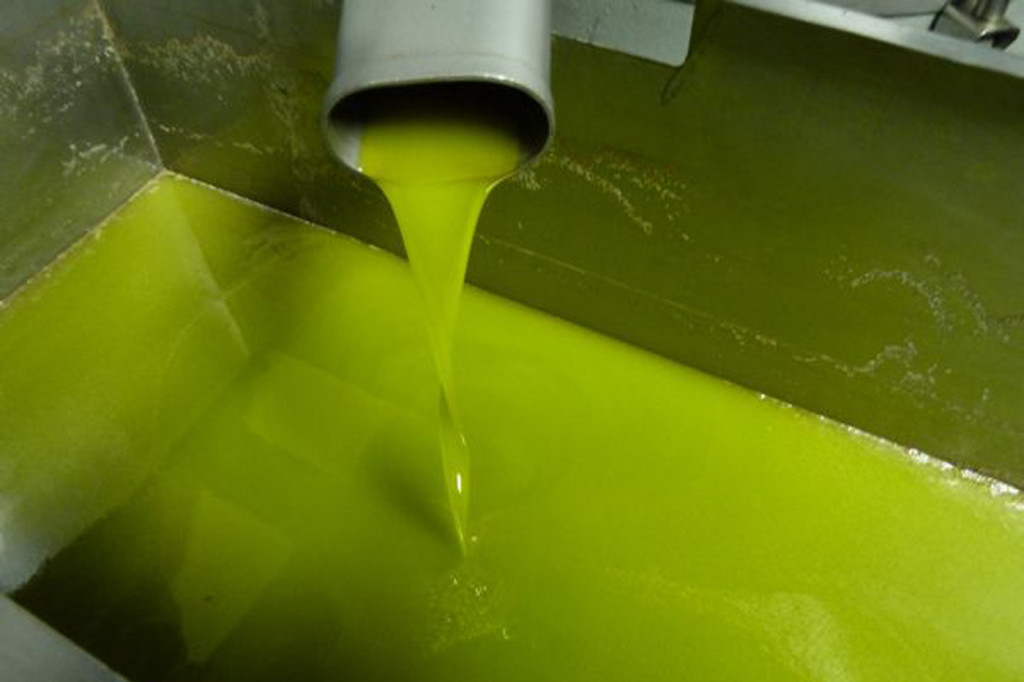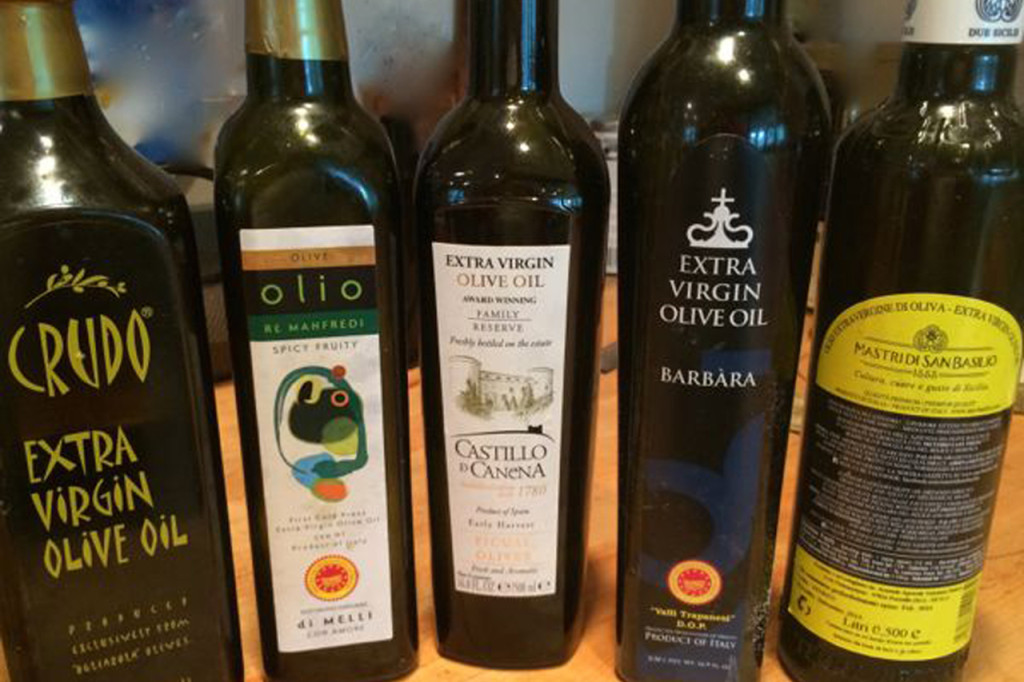Hot, Hot, Hot: Warm Temps Need Not Ruin Olive Oil
By Nancy Harmon Jenkins
Extra virgin olive oils made in hot climates have not had a great reputation. Oils from Sicily and Puglia in Italy and Andalusia, Spain, and other Mediterranean regions, where harvest temperatures are often searing, are frequently dismissed by exacting consumers. And with good reason: Far too many suffer from a major defect called fustiness.
What does fustiness taste like? I know it on my palate, but I can’t always summon words to describe it. To me, it tastes like badly preserved black olives and smells like moldy hay in a neglected corner of the barn. (But few people recognize that aroma in this day and age.) Fusty oils lack the complex bitterness, pungency and rich fruitiness that characterize good, fresh, well-made oil. And they usually leave an unpleasant, greasy feeling in your mouth.
The cause of fustiness
Olive oil can have a fusty quality when olives are stored in burlap bags and there is a delay in the time between when the olives are harvested and when they are processed at the mill.

But fustiness is so common that for many people it remains the true taste of olive oil. All too often, in rankings of extra virgin olive oils in national publications, it’s the fusty ones that win top honors. Nevertheless, fustiness is a defect, and a major one.
How does this happen? Usually fustiness develops because of a delay between the harvest of the olives and the conversion into oil at the mill. In the days before the use of continuous-cycle, stainless-steel equipment to process olives and produce oil, that delay could last many days, even weeks. In addition, many farmers were convinced that olives left to “rest” after harvest actually yielded more oil. They don’t, and the oil they do yield is defective because olives piled up in a corner of the frantoio (mill) or packed into burlap bags undergo anaerobic, or lactic acid, fermentation, and that’s what produces fustiness. That fermented effect is almost endemic in hot-climate oils where temperatures at harvest are intense, as they often are in October and early November in regions of southern Italy and Spain, as well as North Africa.
A change for the better
Now, growing numbers of smart, usually small-scale producers are changing that hot-climate flavor profile for the better. How? Simply by speeding up the gap between harvest and pressing — the best producers make oil in a matter of hours rather than days — and maintaining a pristine milling environment, sometimes even using air conditioning to cool the mill and storage areas. What that means for discerning consumers is more and better oil from places in the world that were not known for excellence.
I’m a big fan of many southern oils. I’ve written in the past about Pianogrillo from the Monte Iblea mountains in east-central Sicily, a perennial favorite, as well as Olio Verde from the Belice Valley down near the sea on the south coast of the island, and Titone from the west coast between Marsala and Trapani.

Many regions producing quality oils
But recently I’ve been introduced to several other Sicilian oils, including Mastri di San Basilio, made by the Padova family in the Val d’Ispica, a region of southeastern Sicily that is, somewhat surprisingly, south of the city of Tunis. Their riserva is a blend of moresca and rare verdese olives with lots of fresh green almond flavors that make it an ideal garnish for summery vegetables, whether raw or cooked.
Another Sicilian newcomer is Barbàra from the same western region as Titone, made primarily from cerasuola olives mixed with mild biancolilla and the local cultivar nocellara del Belice. Barbàra’s round, fruity flavor ends with pleasantly marked bitterness in the aftertaste. I liked it with a few drops of lemon juice as a garnish for simple grilled fish.

And then there’s Puglia, the heel of Italy’s boot, with a climate akin to that of Greece. Olio di Melli’s Re Manfredi oil from the Gargano peninsula, the spur on the heel of the boot, is a lushly piquant oil made from ogliarolo and coratina olives. Another candidate among top southern climate oils is Crudo, made by the family of Gaetano Schiralli from ogliarola olives in Bitetto, not far from Puglia’s Adriatic coast. The name says it all: Crudo means raw. This is an oil to use in its raw state on the fabled platters of raw fish and shellfish that are the specialty of the region. A plate of raw oysters with a drop of raw Crudo on each one is a revelation.
(The Puglia region was hard hit by a vicious Xyllela bacterium last year, but it has not so far been detected in the areas described, and authorities hope to confine it to the Basso Salento.)
Not to be outdone, the Spanish region of Andalusia seems like one vast olive grove stretching across southern Spain. It’s a hot region where the bulk of Spain’s low-cost, highly commercialized production takes place, but it is also home to some extremely astute growers, including Melgarejo, whose oil is highly touted, though I have not tasted it recently. One of my favorites is Castillo de Canena, which wins awards for its growing portfolio, the latest of which is a smoked olive oil. While I hold no brief for flavored olive oils, I think Canena makes some of the finest olive oils in Spain, including especially its picual, which I tasted again very recently — and was once again bowled over by the effect it has on a fresh-from-my-garden tomato, exalting the fruitiness of the tomato without overwhelming it. Just a simple raw tomato, sliced, sprinkled with sea salt, with a glug of Canena’s picual, is a perfect summer lunch at my house. Try it on toast for breakfast!
Olive oil recommendations

Here are some contacts for sourcing these oils. Note that Mastri di San Basilio is shipped from Italy via UPS. The producer, Francesco Padova, has had no problems with this system and ships, he says, all over the world.
» Mastri di San Basilio
» Olio di Melli Re Manfredi
» Pianogrillo
» Titone
» Olio Verde
» Castillo de Canena
» Barbàra
» Crudo

Leave a Reply
You must be logged in to post a comment.